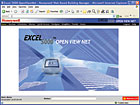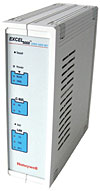Besides some energy cost reduction benefits, the new systems offer labor advantages for field service workers.
HOME HVAC SERVICE SAVINGS
AirAdvice’s HomeAdvice™ system features wireless monitors that take measurements from multiple locations for comfort and energy analyses. According to the company, a communications gateway transmits data via a cellular network to the HomeAdvice server, eliminating the need for a standard landline. SmartIAQ Plus™ reports highlight comfort issues and energy-saving opportunities.The system is said to give contractors the ability to quickly and easily identify hot and cold spots in the home through simultaneous multiroom testing, as well as time-based diagnosis of common indoor environment issues: humidity, temperature, particles/allergens, chemical pollutants, carbon dioxide, and carbon monoxide.

The HomeAdvice system features wireless monitors that take measurements from multiple locations, for comfort and energy analyses.
“The way the new report displays temperatures from different areas in the home is a selling point for me,” said Ted Kirkland at Bland Air Conditioning & Heating, Bakersfield, Calif. “It shows people that they have hot and cold spots in their home, which opens doors for me. I can sell more variable-speed systems that way.”
The report’s Outdoor Environment page shows the outdoor temperature and humidity at the test location. The Energy Use page features a specific energy recommendation plus new green and programmable thermostat sections to better show homeowners how an equipment upgrade might impact their energy bill and their carbon footprint.
“We’ve had success using AirAdvice to sell equipment upgrades and add-on IAQ solutions,” said Jonathan Moscatello, comfort advisor at Oregon Heating, a HomeAdvice system beta tester. With the new product technology, “we can reach the next level,” he said. “We can clearly demonstrate the need for zoning and sell more high-efficiency systems. This ties directly into our focus on whole-home systems overall.”
Service Experts Inc. (SEI), a business segment of Lennox International, said it is using a new wireless technology to increase the efficiency, productivity, and revenue potential of contractors’ service technicians. Through an agreement with Sprint, SEI will use a Sprint Advanced Wireless Solution to automate basic daily job processes.
SEI operates company-owned service centers that provide sales, installation, maintenance, and repair service to the residential and light commercial HVAC markets.
Wireless technology is a key element in launching Project FAST (Field Automation for Service Technicians), according to SEI. FAST’s mobile computing technology allows SEI service techs to communicate and transfer data to and from their service centers in real time. It is expected to allow the techs to reach customers faster, with more information about the job, focus on the customer more than the paperwork, require less day-to-day administration, and provide better customer service overall, the company said.
“We are pleased … to be able to integrate wireless technology into our daily operations on such a scale, especially given the advantages it offers to both our customers and our business,” said Scott Boxer, president and chief operating officer of SEI.
“Implementation of FAST is expected to increase our average service technician’s productivity by as much as one-half hour a day, allowing them to make more effective service calls in less time and provide better service to our customers as a result.”

Honeywell’s Excel 5000® OpenViewNet (above) and graphical
interface (below).
COMMERCIAL CONNECTIONS
Honeywell’s Excel 5000® OpenViewNet, a secure network device that connects the Excel 5000 family of controllers to the Internet, delivers remote, Web-based monitoring and control of HVAC systems.“We’re bringing secure Web access to a legacy control system without forcing users to migrate to a new platform,” said Mike Taylor, vice president of Americas marketing, Honeywell Building Solutions. “With OpenViewNet, facility managers always have control of their Excel 5000 systems at their fingertips, saving time and increasing efficiency.”
OpenViewNet gives users quick access to building data via Internet Explorer or a Pocket PC-enabled mobile device using a simple, easy-to-navigate graphical interface. The interface provides a high-level system overview and also allows facility managers to drill down, visualize a specific piece of equipment - like an air-handling unit - gather information on its operation, and make adjustments as necessary.
“OpenViewNet allows me to access our energy management system from anywhere,” said William Kelly, maintenance mechanic for the University of Houston System at Cinco Ranch. “This includes my home as well as the various campuses I work from, which makes the system easier to manage and more convenient.”

Users can add the network server to new or existing Excel 5000 systems; it includes configuration tools for installation. In addition, OpenViewNet can be set up as a stand-alone system or integrated into the Honeywell Enterprise Buildings Integrator®, a management platform that ties core building functions together for monitoring and control.
“The combination of Web access, ease-of-use, and flexibility make OpenViewNet a compelling way to manage HVAC equipment performance,” Taylor said.
According to Brett Yoder, senior product manager, Honeywell Building Solutions, OpenViewNet offers “a way to connect to your building remotely via an Internet browser. It’s a way to leverage an existing investment,” he said. “If you have an investment in Excel 5000 currently, you can move the system forward to OpenViewNet.” The system is configured through the browser interface.
According to Yoder, the system can read-write point data; users can change set points, override equipment, and turn it on and off. Alarm notification from the HVAC controllers can come up through this device. An alarm summary page gives information in real time, and it can e-mail alarms to an operator or contractor.
“There’s support for trending, so you can see what the past performance of certain pressure-temperature or flow points are, and review it at a later time if you’re having issues,” Yoder said. “You could trend the pressure drop over the filter, for instance.”
In addition to Internet access, the system also can be accessed using a PDA. The system will automatically present you with displays that are the appropriate size for the PDA screens,” Yoder added.
“Basically, the intelligence is getting pushed out at the field, out at the edge,” he said. “It’s a smaller, simpler device that’s out at the controllers. The Web enablement allows an operator to go up to any terminal and, using Internet Explorer, he can call up building data and change set points,” Yoder said.
For more information, visit www.airadvice.com, www.serx.com, and www.honeywell.com.
Publication date:11/12/2007

Report Abusive Comment